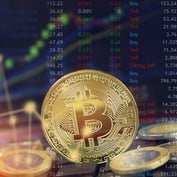The resilience of the Japanese people, their discipline and strength, their respect for one another and for their nation in the face of the great tragedy that befell them has been extolled in the media. And with just cause, for these social attributes, says Yoshihiro Namura, chief investment officer and senior managing director at Nomura Asset Management in Tokyo, are typically Japanese, and they are what bolstered the rapid expansion and economic development of Japan after World War II, helping the country become one of the most important nations in the world.
Now, in the aftermath of the tsunami and the Tohoku earthquake, the social cohesion and solidarity that is characteristic of the Japanese people will be called upon once again to serve as the backbone for the rebuilding of Japan.
“It will require a similar quality of leadership [as in the post-war period], together with social cohesion and solidarity around a common cause, for us to restore and rebuild parts of our society that were devastated by the Tohoku earthquake and its aftermath,” Namura says.
Japan’s post-war reconstruction, he says, was accomplished only because the country was united behind a common objective. As was the case back then, evidence of a common purpose driving the government will be the first milestone that needs to be met after the recent disaster.
“Our experience in the post-war period of supply shortages helped reawaken our passion for creation, technical progress and innovation that had led Japan to transform itself into an industrialized manufacturing country since earlier in the 20th century,” Namura says. “If we are again able to unite behind a common purpose, then we will be able to reconstruct the economy and regional infrastructure.”
But even with the strength and will of the people, and the government’s unabiding commitment to the task at hand, rebuilding Japan’s battered economy could prove to be a Herculean task. It’s no secret that Japan has been struggling with deflation since the mid-1990s, Namura says, a result of the balance sheet recession that followed the bursting of the country’s bubble economy earlier in that decade. The stagnation following the IT bubble and the pressures of increased globalization in the first part of the new millennium have also taken their toll, he says, as have Japan’s dwindling birthrate and its aging population.
Now, with production in a number of industries declining in the short term, and infrastructure having been wiped out on a large scale, economic growth will be hampered even more. Yet despite the odds, Martin Jansen, head of international equities at ING Investments in New York, believes that the Japanese rebuilding effort may actually yield results far quicker than many expect. Not just because “when the Japanese put their mind to something, they can be absolutely single-minded in their commitment,” but because of a paradigm shift in the way many Japanese companies are conducting business—a shift, he says, that had already begun taking root before the disaster, and which will now pick up greater steam.
While Japanese stocks were for years the cheapest on the market, very few listed companies had in them a catalyst to unlock profitability, Jansen says. Growth had stagnated and Japanese companies were slow to focus on shareholder value. But in the recent past, that has started to change, he says, and many more Japanese companies have been looking to prioritize shareholder value. They have been doing this by looking to use globalization to their advantage, slotting themselves in places where, from a business point of view, it makes sense to be, thereby increasing their productivity and their performance.
“Many Japanese companies have become less Japan-centric, as in ‘we’ll make what we make in Japan and export it,’ and more tuned into global trends,” Jansen says. “They’re shifting their production bases to where there’s demand, for instance, and figuring out where things make sense for revenue generation. In the process, they’re creating greater shareholder value.”
Jansen sees this dynamic picking up greater momentum as Japan’s rebuilding effort gets underway. He gives the example of companies like Omron, an industrial automation player, which has outsourced its production to Brazil and other places where there is high demand for its products; and Inpex, an oil and gas exploration company that drills outside Japan, but distributes in the country. Both companies’ stocks came back to pre-earthquake levels relatively fast, he says.
“Japan will rebuild a lot quicker than people think, and in the rebuilding phase you will see growth slightly above average, and you’ll see that certain Japanese companies are well-positioned to take advantage of the situation,” Jansen says.
Japan’s links to Asia are also going to be extremely important for economic growth and reconstruction going forward. Asian giants like China and India are big consumers of Japanese products, and while short-term production declines may make it difficult to meet that demand, Asia as the engine of global growth is a longer-term trend that will continue to gain momentum, Jansen says.
As long as Japanese exports to Asia remain robust, the growth rate of the Japanese economy should rise in the latter half of this year, Namura says. But Japan has to make sure that it retains and strengthens its links to Asia, and consequently to world economic growth over the medium-term, by signing economic partnership agreements and free trade agreements.
While the road ahead will be arduous for Japan, the disaster has also brought into question a raft of issues that affect the whole world. As market players digest every day’s headlines, they are looking for opportunities both within Japan and in the markets-at-large. Here’s where a few of them see the best potential.
Nuclear Power
 Malcolm Gissen, founder of Malcolm H. Gissen & Associates and manager of the Encompass Fund
Malcolm Gissen, founder of Malcolm H. Gissen & Associates and manager of the Encompass Fund
In times of crisis, politicians will do what they need to do, and in the immediate aftermath of the Japanese tragedy, it was only to be expected that many would crack down on nuclear power. Germany’s chancellor Angela Merkel, locked in a tight election campaign, temporarily halted plans to extend the lives of seven nuclear power plants and took two older plants off the grid for a time. Worldwide, the future of nuclear power is once again at the center of the energy debate.
Nevertheless, Malcolm Gissen, founder of San Francisco investment management firm Malcolm H. Gissen & Associates and manager of the Encompass Fund, believes that nuclear power will not lose its luster. On the contrary, he is convinced that uranium stocks are set to have their greatest run yet, and that they represent a great investment opportunity in the longer term.
“Uranium prices had jumped 75% in the six months prior to the Japanese earthquake, and immediately after the incident uranium stocks lost 30% of their value,” Gissen says. “But they quickly moved up again and we took advantage of the moment to buy more of the three or four uranium companies that we like because we knew the market would recover.”
In Gissen’s opinion, the case for uranium and subsequently, nuclear power, is clear-cut. The crisis at the nuclear reactors in Japan has thrust the debate over nuclear energy into the spotlight and politicians will have to answer to public opinion. But no country can or will exit the nuclear power arena, Gissen says, because of the economics of the industry. The world’s uranium needs are huge, he says, and still need to be met.
Emerging Growth
 Taizo Ishida, lead manager of Matthews Japan Fund and Matthews Asia-Pacific Fund
Taizo Ishida, lead manager of Matthews Japan Fund and Matthews Asia-Pacific Fund
Of course, the Japanese tragedy will lead countries to tighten standards for the development of nuclear power plants. Approval processes will take longer and there will be more rigorous due diligence in ensuring that plants can withstand the impact of cataclysmic events like tsunamis and earthquakes, Gissen says. Nuclear power technology has evolved significantly since the 1986 disaster in Chernobyl and now, it has a chance to be honed even more. But countries cannot afford to stop developing nuclear power, not least because it represents a clean and cheap source of energy and reduces their dependence on oil, he says.
“Nuclear power plants also provide an enormous number of jobs for a great many workers,” he says. “Because they are so costly to make, the jobs are also well-paying.”
Gissen’s top picks for the uranium sector are: Cameco (CCJ), the largest uranium producer in the world; Uranium Energy Corporation (UEC), the newest producer with facilities in Texas, which also ranks among the Encompass Fund’s top five holdings; UR-Energy (URG), the next American company likely to begin production out of Wyoming; and Paladin (PALAF), a mid-sized producer based in the African nation of Namibia with projects in Australia.
Even before the devastation caused by the tsunami and the earthquake, Japan was not an obvious example of growth potential in Asia. Investors looking to cash in on this potential have been seduced by countries like India and China, but for Taizo Ishida, lead manager of Matthews Japan Fund and Matthews Asia-Pacific Fund, uncovering underlying growth opportunities in places where they do not seem obvious often yields the greatest rewards.
Ishida has pinpointed several sectors of emerging growth in Japan, and even after the disaster he is still bullish on them—“perhaps even more so,” he says, “since they are priced even better than before.”
The trick to finding these opportunities is to examine companies on an individualized, bottom-up basis, rather than considering a sector overall, Ishida says. Retail, for example, is a sector that many believe has little potential for growth in developed economies, but in Japan, “there are some small, niche players that have been doing very well and will continue to do well,” Ishida says.
He does not want to name specific names that he likes, but Ishida gives the example of a retail bicycle chain: “There are no mom-and-pop bicycle shops left in Japan, so there is huge room for an organized retail shop like this,” he says. “Bicycle consumption in Japan has become flat, but about 10 million bikes are bought each year and someone has to provide those.”








 May 01, 2011 at 08:00 PM
May 01, 2011 at 08:00 PM











 Wilfred Sit, head of investment strategy for Asia-Pacific, Mirae Asset Global Investments
Wilfred Sit, head of investment strategy for Asia-Pacific, Mirae Asset Global Investments Edward Guinness, co-manager of Guinness Atkinson Funds
Edward Guinness, co-manager of Guinness Atkinson Funds Julian McManus, co-portfolio manager of Janus International Equity Fund
Julian McManus, co-portfolio manager of Janus International Equity Fund